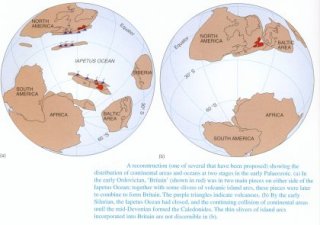The ’tilt, wobble and stretch’ of planet Earth on its celestial path contribute to long-term variation in environmental conditions that determine whether and where on Earth life can thrive or even be sustained.
It was a Yugoslav scientist who first closely studied these variations and proposed a theory based upon them, and named for him, the Milankovitch cycle.
It is important to appreciate that we are not speaking of Earth’s ‘diurnal course’ that determines the length of seasons, or of the day or year. Variations in the ’tilt, wobble and stretch’ occur over tens, to hundreds of thousands of years or even longer.
You may have learned at school for example, that the present tilt of the Earth on its axis – at 23.5˚ – has the Sun in its highest position in the sky at our latitude in June/July, giving us summertime while southern latitudes are simultaneously experiencing winter, when the Sun is at its lowest in their sky. Relative distance of Earth from the Sun (stretch) does vary too, but is a small contributory factor. Over the very long term – beyond any affect on hundreds of generations of Modern Man – the tilt will vary from ~16˚ to ~25˚, while the ‘stretch’ will vary even more dramatically. The ‘wobble’ is similar to the occasional eccentric motion of a spinning top before it reverts to its previously fairly constant spin. Its period on the planet is even longer.
Calculating the relative periods and their inter-relationships was the meteorologists’ achievement.
On the human observable scale, the principal affect is the numerous glaciations, inter-glacials and hot periods that Earth has experienced. Though the burning of fossil fuels and the denudation of tropical forests by industrial man has dangerously warmed the Earth, we are nevertheless still in an inter-glacial after the retreat of the last Ice Age some twelve thousand years ago. Indeed the next ‘step’ of this great cycle is towards a further glacial spell. For our children – and perhaps for ten or more generations to come – this will have no affect as these cycles are on huge time scales. For the next few hundreds of years the major problems will come from massive global rises in sea level, consistent with the melting of the ice caps. We will lose to the sea substantial portions of our low-lying, fertile and heavily populated land – and probably much human life.
But I wanted to speak of the legacy on our present-day landscape of those last few glaciations! The last but one held the Earth frozen in its icy grip some 60,000 years ago. We have no visible legacy from that because another came along 30,000 years ago to wipe over the traces. In more temperate latitudes, modern man emerged some 30,000 years ago but the earliest trace of human habitation in Ireland is some 9,000 years ago.
The retreating glaciers sculpted the landscape we know today – that is, beneath the top ‘gloss’ fashioned by the hand of man. We have the lakes, the scoured mountain sides and tops, and of course the drumlins to testify to the retreating ice. The largest extant evidence of early human habitation is in the multitude of megalithic tombs – in which our area of South Armagh, South Down and North Louth is so endowed.
… more later …
